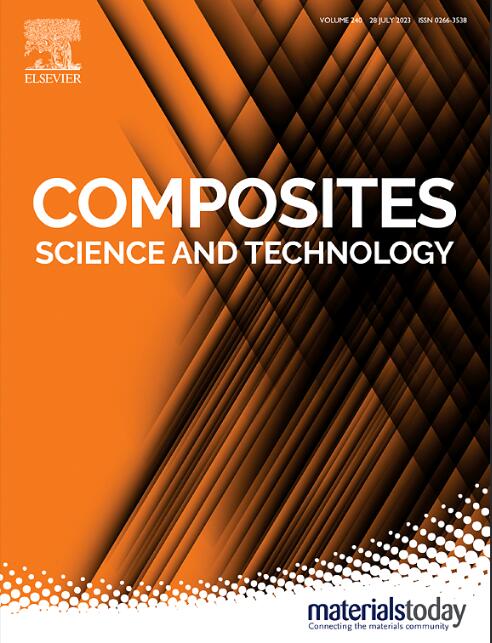聚二甲基硅氧烷复合流体微观网络结构与宏观流变性能的联系
IF 8.3
1区 材料科学
Q1 MATERIALS SCIENCE, COMPOSITES
引用次数: 0
摘要
聚二甲基硅氧烷基复合流体由于其高导热性和独特的流变特性,被广泛用作芯片散热的热界面材料。然而,建立宏观流变性能和微观结构之间的直接关系是具有挑战性的。本文以微米级片状氮化硼(BN)和球形氧化铝(Al2O3)为模型填料,结合标度理论分析了聚二甲基硅氧烷(PDMS)基复合流体的微观网络结构与宏观流变性能之间的关系。研究发现,Al2O3/PDMS复合流体的流变性能与BN/PDMS复合流体不同,Al2O3/PDMS复合流体随填充体积分数的增加呈超指数增长,而BN/PDMS复合流体呈指数增长。触变性能表明,球形Al2O3颗粒具有较高的回收率,而血小板BN对回收率的影响较小。BN和Al2O3在流变性能上的差异源于颗粒间的作用力和颗粒网络:BN颗粒出人意料地形成了胶状簇和颗粒网络,而Al2O3颗粒则形成了以体积斥力为主的干扰结构。以这两种复合流体作为热界面材料,我们证明了BN/PDMS复合流体比Al2O3/PDMS复合流体具有更好的点胶操作性能和更好的芯片散热能力。本文章由计算机程序翻译,如有差异,请以英文原文为准。

Linking microscopic network structure to macroscopic rheological properties in polydimethylsiloxane composite fluids
Polydimethylsiloxane-based composite fluids are extensively utilized as thermal interface materials for heat dissipation of chips, due to their high thermal conductivity and distinctive rheological behaviors. However, establishing direct correlations between macroscopic rheological properties and microscopic structures has proven challenging. Here, using micron sized platelet boron nitride (BN) and spherical aluminum oxide (Al2O3) as model fillers, we elucidate the relationship between the microscopic network structure and the macroscopic rheological properties of polydimethylsiloxane (PDMS) based composite fluids by analyzing the particle networks in conjunction with scaling theory. We find that the rheology properties of the Al2O3/PDMS composite fluids are different from those of the BN/PDMS composite fluids, where the Al2O3/PDMS composite fluids increase hyper exponentially with filling volume fraction, but the BN/PDMS composite fluids increases exponentially. The thixotropic properties reveal that the spherical Al2O3 particles have high recovery rate, but the platelet BN contributes to a low recovery rate. The difference in rheological performance between BN and Al2O3 stems from the interparticle forces and particle networks: BN particles surprisingly form colloidal-style clusters and particle networks, whereas Al2O3 particles create a volume-repulsion-dominated jamming structure. Using these two composite fluids as thermal interface materials, we demonstrate that the BN/PDMS composite fluids capable with better dispensing operation performance and better ability of heat dissipation for chip than the Al2O3/PDMS composite fluids.
求助全文
通过发布文献求助,成功后即可免费获取论文全文。
去求助
来源期刊

Composites Science and Technology
工程技术-材料科学:复合
CiteScore
16.20
自引率
9.90%
发文量
611
审稿时长
33 days
期刊介绍:
Composites Science and Technology publishes refereed original articles on the fundamental and applied science of engineering composites. The focus of this journal is on polymeric matrix composites with reinforcements/fillers ranging from nano- to macro-scale. CSTE encourages manuscripts reporting unique, innovative contributions to the physics, chemistry, materials science and applied mechanics aspects of advanced composites.
Besides traditional fiber reinforced composites, novel composites with significant potential for engineering applications are encouraged.
 求助内容:
求助内容: 应助结果提醒方式:
应助结果提醒方式:


